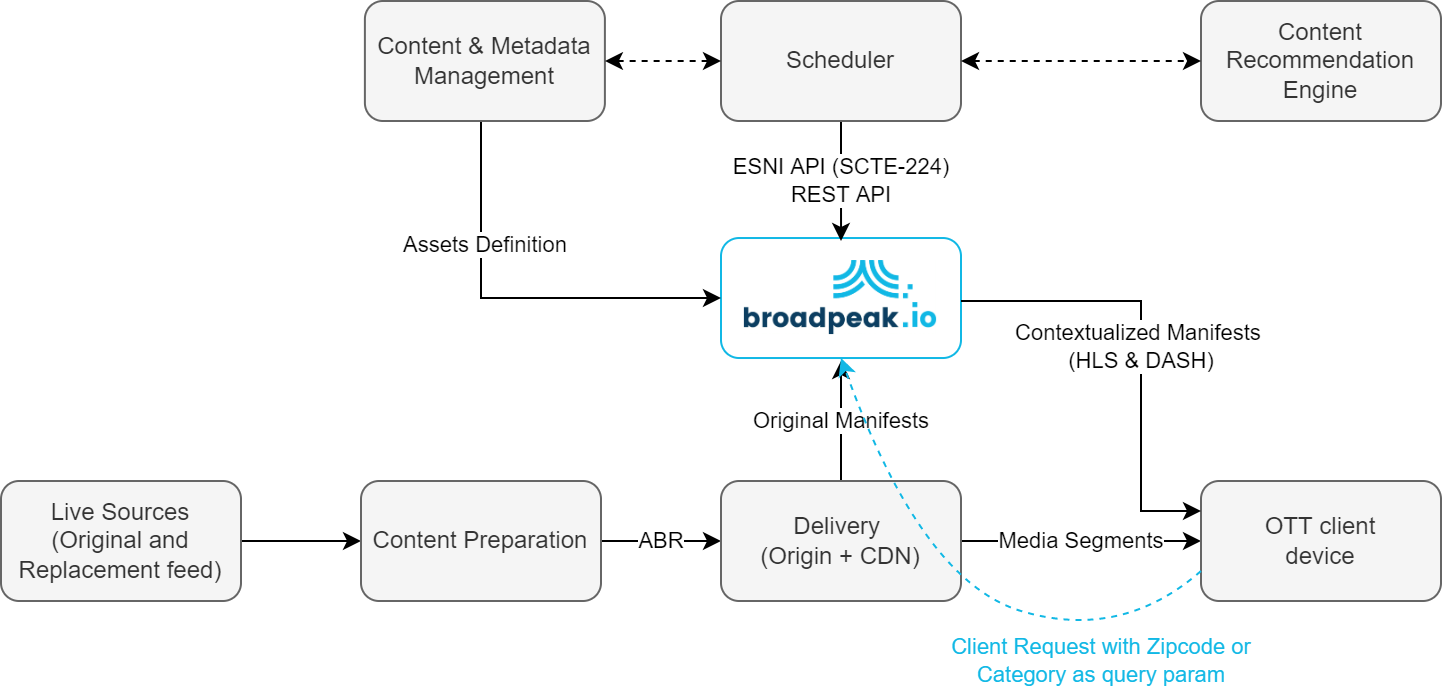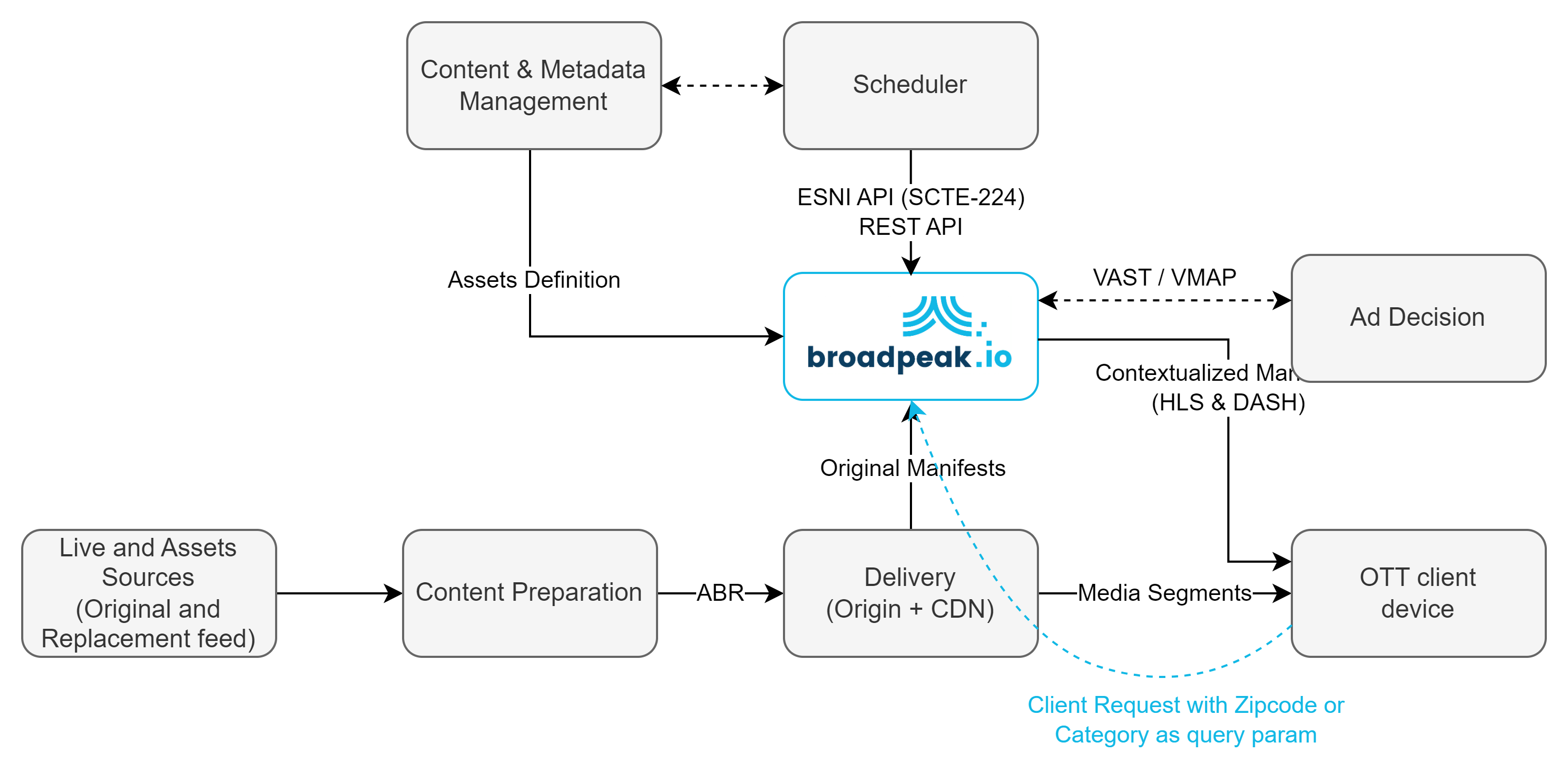Use cases
Understand the various Virtual Channel scenarios enabled by broadpeak.io
broadpeak.io leverages the content replacement technology to enable Virtual Channel scenarios. A virtual timeline for each personalized subscriber can be built through API, through which VOD(s) or live Event(s) can be scheduled as a replacement content, over a period of time. It relies on an existing live channel used as a base stream, on which content replacement is applied. A content replacement slot (or a Mediapoint in ESNI API) allows to define when and for how long to apply the content replacement, the replacement Source, and the specified Audience it applies to.
At this point, a typical ecosystem to implement Virtual Channels includes a Scheduler and a content & Metadata Management system to build consistent timeline and implement is the following:

Typical ecosystem to implement modern Virtual Channels
Modern Virtual Channels
The most basic approach to Virtual Channels is to consecutively play Video-on-Demand assets to the TV viewer. Typical Virtual Channels would revolve around specific themes such as Cooking, Travel, Nature, Hunting, etc. Most advanced use-cases also allow the creation of Virtual Channels based on a combination of VOD and Live program or events. broadpeak.io allows you to perform these uses-cases.
Taking advantage of the server-side technology, broadpeak.io implements the Virtual Channel logic seamlessly in the back-end, so everything is abstracted to the client. When creating a modern Virtual Channel on broadpeak.io, a Live manifest is delivered to TV viewers, so the player sees a real Live stream.
Creating a Virtual Channel on broadpeak.io implies that an external system is able to perform a scheduling, selecting what are the VOD(s), or Event(s) that need to be be scheduled, at what time, and for how long. It is usually represented by what we call a Virtual Timeline, which is the graphic representation of the consecutive programs scheduled on the channel over time. For each program that needs to be scheduled, a content replacement slot must be created through API for your Virtual Timeline to be effective as a Virtual Channel.
When working HLS and DASH, the same Virtual Timeline must be built over both HLS and MPEG-DASH Services to ensure that all types of devices will get the same experience. Please note that due to the nature of the standards, the splicing precision in HLS, which usually relies on larger segment size, is lower than in MPEG-DASH. For more information, please see the section Understanding broadpeak.io behavior .
Personalized Virtual Channels
A better way to engage with an audience can be achieved through the use of Personalized Virtual Channel. With technologies such as recommendation services, which are made to provide a list of content that matches the preferences of the TV subscribers, it is possible to build a channel entirely based on the content that TV subscribers love and expect of a lean back experience.
A typical ecosystem to implement Personalized Virtual Channels would add a recommendation Engine in the slot creation workflow:

FAST channels
FAST stands for Free Ad Supported TV. It combines content aggregation that we described formerly and ad insertion in a single linear live stream. Then it makes it easy to monetize such live streams.
If we take personalisation into account by using categories, we can build a full linear channel with contents and ads that are especially curated for each sub-part of an audience, although they are watching a single channel. The ecosystem will hold a additional element : the ad server that decide and indicate what ad to insert.

Updated 5 months ago
